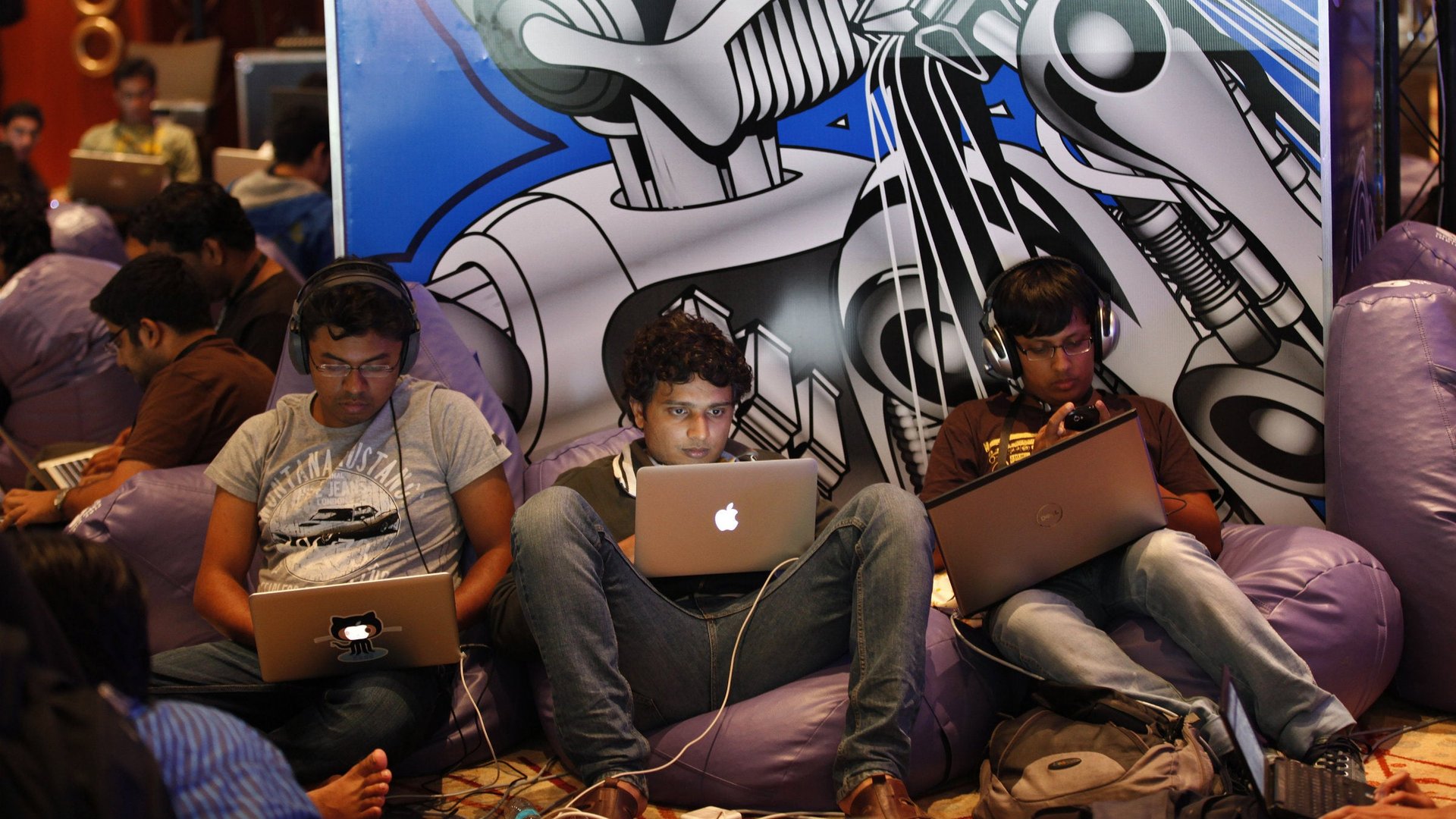India’s nascent VC sector is facing a funding crunch
As an immigration debate rages in the United States, with the cap on tech-savvy Indian immigrants a major point of contention, India’s own venture capital sector is hitting a rough patch.


As an immigration debate rages in the United States, with the cap on tech-savvy Indian immigrants a major point of contention, India’s own venture capital sector is hitting a rough patch.
A survey of 40 Indian investors from GSF India, a startup accelerator, found that funding is contracting and the outlook for 2013 is souring. After a steady increase in 2011, venture capital declined by 18 percent to $1.4 billion in 2012. Recent data show that the VC and private equity totals in February—$378 million across 29 deals—dropped 35 percent from the same month last year.
The climate isn’t unrelentingly grim; for some Indian startups it may yet pay off. Local VCs, like their counterparts in the U.S., are entering into more early seed deals and collaborating with the new wave of angel investors, who typically seek out smaller deals and invest their own money. But for most entrepreneurs, the funding retrenchment spells bad news, as investors who could potentially get companies off the ground are increasingly leery of risk.
The path to profit is especially uncertain. According to the consultancy Four-S Services, India saw only 80 VC and private equity exits in 2012. Less than a fifth were public offerings; the bulk were strategic departures..
Historically, Indian VCs and angels have always moved more cautiously than their U.S. counterparts, explained Pankaj Jain, a partner with 500 Startups in New Delhi. This may largely be from growing pains. “Historically,” he noted, “is like three years.”
Those scant years have seen a sizable VC presence take root in places like Bangalore. When Ravi Gururaj started his first company in 2004, “I had to go to the US,” he told me. “There were hardly any VCs here. Nothing, nobody.” Now, he said, you may find three on one street in some well-heeled Bangalore neighborhoods.
But despite their higher visibility, most Indian VCs have the capacity and appetite to write only a few checks. Last summer, Gururaj co-founded India’s chapter of Harvard Angels, one of a slew of seed funders opening up recently to fill this gap. From 2010 to 2012, the number of nationwide angel or seed deals went from 33 to 185, increasing five-fold to $72 million.
Meanwhile, VC deals fell flat. As the startup sector tries to emulate the U.S., there is some concern it will ape its problems, particularly the “series A crunch,” a financing hole that leaves young companies, propped with early funds, unable to nab growth capital. Last year in India, the 160 Series A funding deals in 2012 totaled $430.6 million—lower than 2006’s total of $447.2 million, which were spread among a mere 101 deals.
Rutvik Doshi, principal at Inventus Capital, an early stage VC, denied that there was a middleweight financing drought. Recently, he said, “there weren’t enough startups that were willing to break through or had enough capital to reach Series A.” He argues that has changed, as entry costs have collapsed, and entrepreneurial interest has swelled.
India, however, has only about a dozen VCs cutting early deals, and most make five to six a year. Investors surveyed by GSF pointed to a sustained Series A shortage to come. One angel investor predicted it will be another year to 18 months before these flows began to meet demand.